Cody Reviews the Respawn's Battle Royale game, Apex Legends.
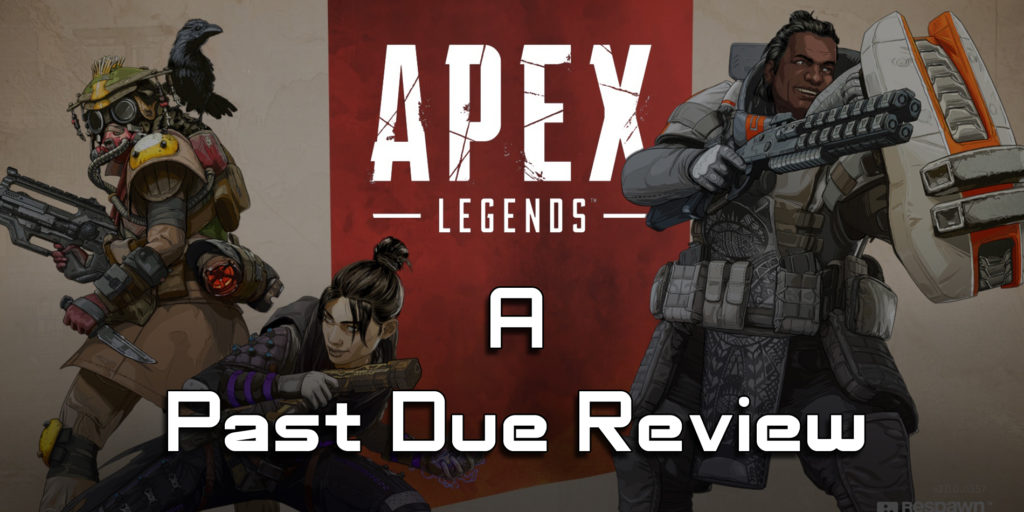
Cody Reviews the Respawn's Battle Royale game, Apex Legends.
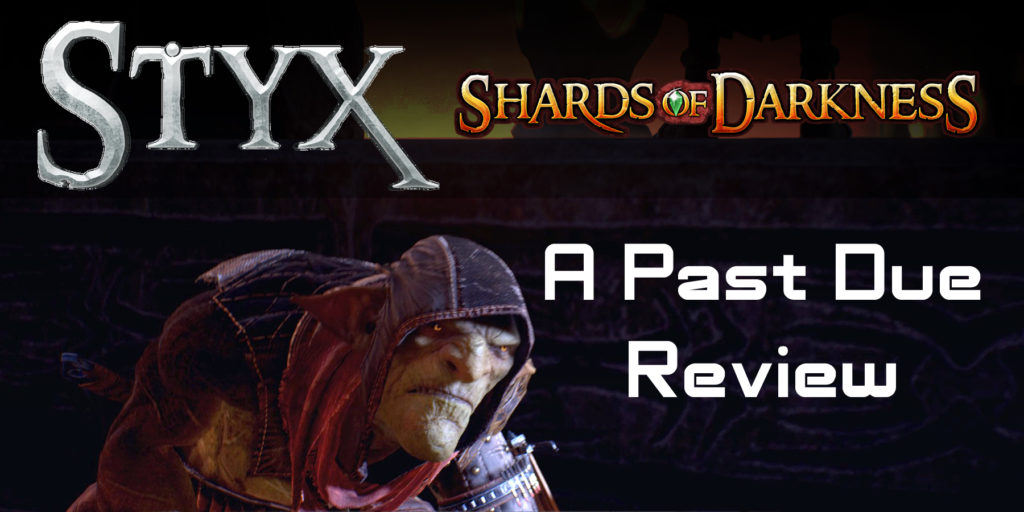
Styx: Shards of Darkness is an old school, sight and sound based, straight up stealth game. If you’re used to Action-Stealth games of the modern age (an oxymoron if there ever was one) this game might shock your sense even more so than its predecessor. The sequel to Master of Shadows, Shard of Darkness ups the ante on its level design, lighting systems, and difficult paths even for stealth veterans. As always I’ll be taking a look at those areas and more, and see where the game might have a few faults. Starting where we always do in a past due review, let’s see what the game’s animations look like. Read more
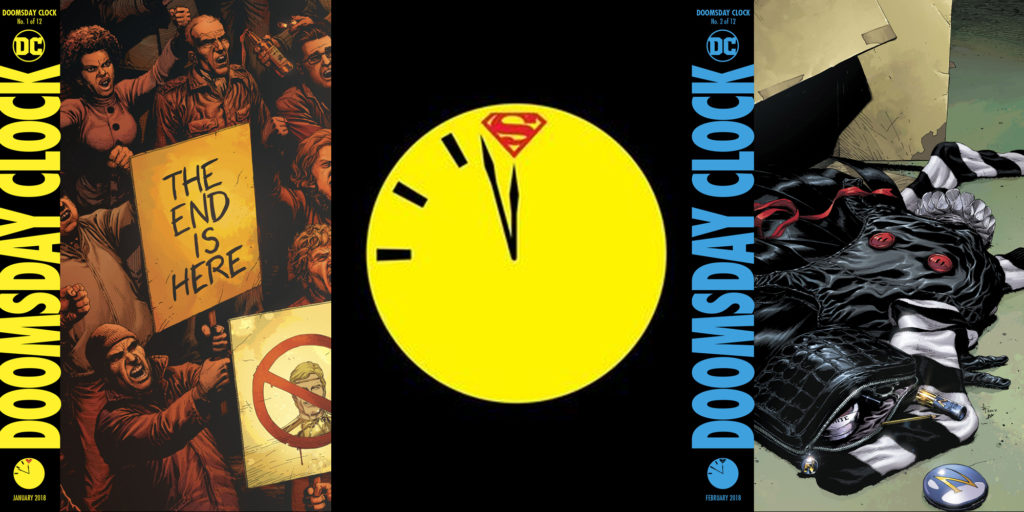
You can not make a sequel to Blade Runner. It will be terrible and taint the original. Turns out you can make a sequel that’s better and improves the original knowing where the story goes.
You can not write a sequel to Watchmen or have them interact with the proper DC characters. It will be terrible and very clearly go against one of the biggest themes of the story. Well it turns out you can write it so the characters slowly get introduced to the idea of someone as Powerful as Doctor Manhattan, while leading into a story that so far feels so much like the original series that it’s almost eerie.
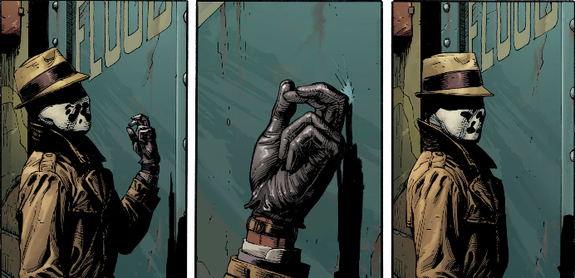
Geoff Johns has been a highly acclaimed writer in the comics world for a long time, and with good reason. He is able to perfectly capture the voices of so many varied characters and what makes them tick. So it really shouldn't have been a surprise he could do the same with Watchmen. Despite it’s nearly otherworldly status in the medium, Watchmen suddenly begins to feel incomplete after the first two pages of Doomsday Clock.
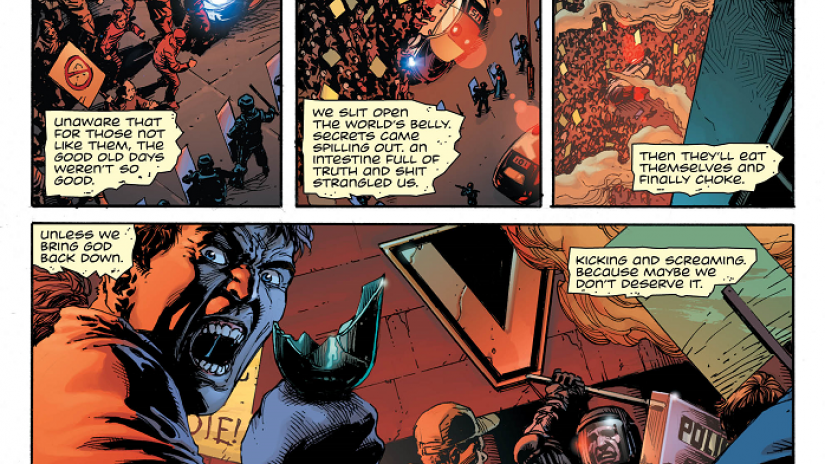
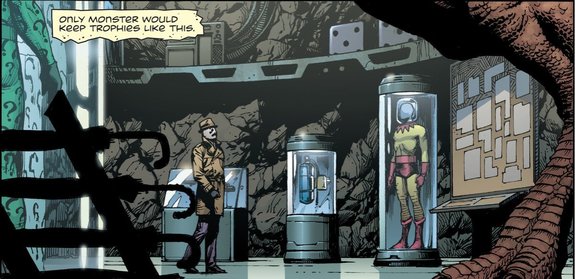
Not only does Gary Frank manage to meticulously recapture Dave Gibbons’ art from Watchmen, but the classic nine panel grid and its varied forms are straight out of 1988. The language and mannerisms of the characters and how they move, talk, and emote on the page all show how Johns and Frank have done more than their homework on this one. And you have too. There is so much baggage that comes with committing sacrilege that a writer can’t afford to skip homework when doing something like this.
Fortunately this is not the first time Geoff Johns has committed sacrilege in the eyes of the comic book community, and it’s always created some of the most iconic stories in the medium. And yeah, it would be naive to think Doomsday Clock was going to be any different. And after just nearly two issues, it is clear w may be in for his best work yet. We’ll find out in a year if him and Frank stick the landing, but at this point it’s at least clear they know how to recapture what made Watchmen, Watchmen.
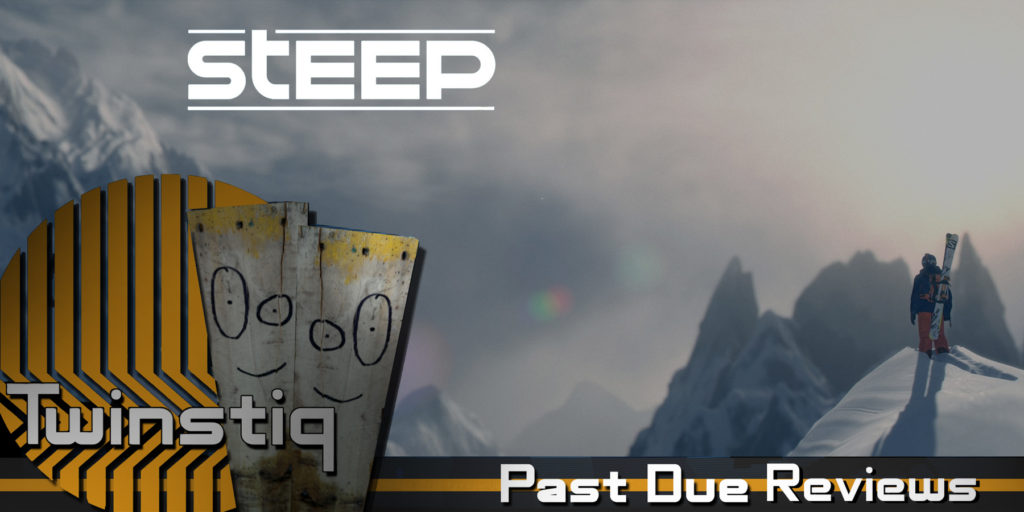
Well this review comes in later than most, even if it is past due. My last Past Due Review was actually a year ago when I reviewed SUPERHOT. Then I decided to basically not play any games that came out in 2016 and instead opted to do nearly a years research of games from 2011 for the conceptual gaming awards I did for said games. But now it’s 2017 and we got front loaded with a lot of great games to choose from, all of which aren’t short by any means. So what does this Ubisoft shade throwing gaming blogger decide to do as a first big purchase of a title? Well buy an extreme sports game that came out last year in December of course.
Makes about as much sense as the daily news cycle I know. But regardless, I had heard great things about the game from the Gamers With Jobs Podcast that I frequent. Their description of the game was unlike any impression the few trailers I had both seen, and made fun of, at a short glance.
So when a free weekend offered me a chance to try it out, I did so. It was the third Ubisoft game I had played in a free weekend. Much like Rainbow Six Siege and Wildlands, my low expectations where more than exceeded. Unlike with Siege or Ghost Recon, both of which I have not purchased, I did not hesitate for a minute to purchase Steep after nearly two hours of time spent in its world. Why? Well that was a question I couldn’t answer myself, until I decided I needed to write about the game. Don't worry I'll tell you why, but first things first:
Video Transcript:
Steep is a game about exploring a mountain. Simple as that. The way in which you choose to explore the mountain is up to you. Whether that be alone, with friends, by ski, board, or sky. Being so focused on exploring, there is no need to be getting your adrenaline pumping the way the trailers and promo material would have you believe. Though that extreme stuff is there for those who want it, the mountain you travel upon doesn’t have a timer or a score you need to reach. It is just there for you to find new areas and paths for you to enjoy.
I'll discuss that more later. First, we need to give this game the proper Past Due Review treatment. Examine all of its facets and discuss the quality of the game's Modeling, Lighting, Level Design, and more. All in great detail. I'll start where I always do, with Animation quality.
As much shit as I love to give Ubisoft, their games have had a history of amazing Animations. It's never mattered what studio worked on the game. And Steep is no exception. Especially considering how all the character models have realistic proportions, its uncanny how natural the animations still feel. Many people would think that having a more stylized character to work with would make the job of the animator harder. In reality the more stylized a character, the more stylized their motions can be. So when those characters move in an exaggerated way we don’t question it. But we watch real people all the time, we know how they move and are more critical of their movements. Combine that challenge with having the strange ways our bodies behave while wearing constrictive boots or are mounted to a board, the animators had a really big hill to climb here to get these right. But every walk cycle, Idle Animation, Back flip, Front flip, and Fist pump show an incredibly competent understanding of motion. There aren't that many great key poses that stick out, but that is clearly intentional. The focus here is making those key poses blend more seamlessly with the overall movement. Being able to make these models move in such a way without tumbling down the uncanny valley truly is a remarkable achievement.
Speaking of those character models.
The character models aren’t offensive in anyway, but they aren't particularly special either. They are however a great vehicle for the many customization options made available. All these clothes and accessories are where the texture artists really get to show off their chops. The gear is also modeled quite well despite many of the accessories clipping through clothes quite often. But as far as the actual character models go, there really only appears to be different body meshes; one male and one female. The only difference between the six riders you can play as are the head models. But again, the customization options made available here all look great on the trail and are a much bigger focus than the body or facial rig.
I have a hard time determining what the best aspect of this game’s art assets are. The two I can never pick a winner between are Audio and Lighting. Usually lighting on a scale this large would tank performance or look cheapened by localized lighting being prioritized over distance shadows and the like. But here, the alps look nearly photo-realistic no matter what time of day you choose to ski under. The way light glistens off the snow ties in nicely with the way the powder looks when under shadow or the baking sun.
The development team may have picked a daunting task for their modelers as their first game. But seeing as how the Alps can be spotted from their offices, they ended up being the best team for the job. It turns out that when you visit the alps nearly every weekend to go skiing with your office buddies, you get a good idea on how to model a mountain or two. But don’t think they fell into the “realism over fun” trap. The developers themselves even stated how they did not prioritize having a map accurate representation of the topography of the Alps, and instead focused on designing a beautiful world that was fun to explore.
Snow has never before looked this great in a game. The way it perfectly parts to every subtle touch and creates snowballs that pile up while you carve power, is superb. The biggest negative I can say about the game’s particle effects are that many of these effects, powder on the ground excluded, are a little commonplace. But I understand the need to sacrifice some effect quality in order to achieve better performance. If I have to trade better weather effects for the best damn snow I've ever traversed outside of a real world scenario, then I can’t complain.
Audiophiles, this game was made for you. I honestly feel like the audio engineers must have shoveled snow into a truck, drove it back to a giant audio recording studio, brought in some gear, and went to town. Every foot step is met with the pure sound of snow being slowly compressed under the weight. Boards and skis slide over powder as it escapes the pressure by flowing out of the higher side. Never have I heard such natural sounds captured so, well, naturally. And it doesn’t end at the gear or equipment’s rustling and impactful noises, the calls from the wild sound just as impressive. [wolf sound] You are only doing yourself a disservice if you don’t play this game a pair of high fidelity headphones. The sound of powder being broken up in my path may be one of the most trance inducing things I've heard in years. You can't help just feeling an overwhelming sense of peace and relaxation.
A big part of that sense of peace comes from the game's score. Not its fun pop-song filled soundtrack, but its original score. Composed by the Zikali Collective, a music production group who dedicate themselves to making images speak, the Score of Steep is as great at being grand as it is at being understated. I'm seriously considering taking this music with me the next time I get to actually go skiing in real life.
There isn't a nice enough art asset in the world that could save a game if it didn't play well. So let's jump into the meat of what makes Steep, Steep.
I really wasn’t expecting any kind of depth from this game. In all honestly I mocked the first trailer when it appeared at last year's E3. I had just presumed it was Ubisoft making yet another horrible decision among a series of bad ones. But Steep does manage fairly well at managing five different modes of travel through its world. Because as I said, this is a game about exploration. So let’s talk about all the tools Steep gives you to do just that.
Before I do though, I feel a desperate need to take the time to say how god damn refreshing it is too play a game that lets you have access to all of these mechanics the instant you load the game for the first time. Unlike many other titles from the publisher, there is no experience or tutorial gate locking these options away from you. Just pick one and learn.
Obviously the focus of the game was put into these two modes, and while their controls are very alike, there are some subtle differences. So first let's talk about the similarities. First off the game is much more like Skate than Amped or SSX. What I mean by that is there a bigger focus on control over the board or skis, and less focus on the character on top of the board. The left analog stick will control the front of the board, while the right stick controls the rear. So you need to be able move both in the correct direction relative to what you’re trying to do. Your right trigger primes your character to jump when held, and jumps when released. Obviously this brings the character into a state where tricks and flips can be attempted and the sticks and triggers change slightly to reflect this. The important thing to do though is make sure you manage both ends of that board at the start and end of a jump, or succumb to one of the most common activities you’ll encounter in Steep, falling. Don’t feel overwhelmed by those controls though, they truly are easy to learn and hard to master.
My first thoughts about this system were that clearly this would lead to horrible camera angles since you never get to control it while on the board. But surprisingly after nearly 20 hours of play I have never run into a single camera issue in any of the game's modes.
For those of you who do want to get your adrenaline pumping, this is what where you’ll find the best methods for doing so. Not much complexity to the controls in this mode, just the use of the left stick to control direction and speed, with the right stick for quick dodging left or right. It’s where you choose to start gliding that makes this mode, and the level design stand out. The wing-suit is also great for traveling quickly from one point to another, and as long as you don't need to go uphill, it will work wonders for you. But of course it's more than tempting to find a rocky cliff or tree crowded area to traverse through. And it’s in those area’s you will find yourself trying hard to beat the game's challenges or just challenge yourself.
Speaking of going uphill, this is the mode that was made for that. In addition to being the most relaxing and easiest mode of travel, paragliding is the only one that can use winds from the mountain to gain height and reach places you may not be able to otherwise. It’s major downfall is that it is hard to be accurate about where you want to go or land. But nothing else really comes close to being able to float high above the gorgeous landscapes of the world below.
This fifth method of travel tends to have much less use than the previous four, and is certainly the slowest. But if you ever get stuck in a weird spot, or need to reach the top of a hill that’s too close for paragliding, walking does the trick. Hell, maybe you had enough extreme spots for the day, but you still want to hang out around the world. Well, taking a run across the top of Mount Blanc may just do the trick. It’s really more a convenience factor that this mode is even included for those rare moments where walking is needed. And again, it makes the animation quality of this mode all the more impressive since they are so rarely seen.
These modes can be accessed at anytime with the press of a button, no messy menus or convoluted control schemes. Which makes it easier to just explore the world, earn experience, and complete challenges. All of these systems present a fairly comprehensive place for you to explore the world in, unlock new aesthetic gear from challenges, and discover where your favorite mountain pass is.
Speaking of the Mountain, these developers really went all out on making sure the four main methods of travel are applicable to anywhere you could find yourself. The level design team also went to great lengths to ensure that fun paths won out over authentic embodimentism. The level design in Steep, while based off of the Alps the team lives by, is by no means an accurate recreation of the mountain region. Instead the developers made the right call by insuring this game had well crafted areas you can navigate in interesting ways. So many games these days, including many Ubisoft titles, forgo the game being designed well in favor of accurate depictions of the real world. But in my mind I would definitely prefer fun mechanics over a true representation of the Alps or Mount Denali.
Yeah I bet you must be as surprised I was to learn this game had anything resembling a story, let alone something as existential and reflective as the narratives within Steep. Along with challenges and locations, you unlock Mountain Stories while playing Steep. This is where the comparisons to games like Journey or Abzu come into play. The mountain stories are usually specific stories or tales from the spirit of the mountain, often told from the perspective of a specific mountain summit.
These are told to you with excellent narration as you Ski, Board, Glide, or Even Walk along to a point or points of interest in the area. Sometimes you are to follow or accompany an apparition who either represents the mountain or someone who once rode the path long ago.
All of these stories are both great stand alone 10 to 15 minute adventures, as well as unique pieces of history that help build out a greater familiarity with the terrain than you would find in any other sports game. The stories are so plentiful and so artfully done that they alone are honestly worth the price of admission.
Traveling around the world, unlocking new drop zones, and doing tricks to earn points all give you experience. Completing the various challenges around the mountain also earn you experience. When you level up you gain access to higher drop zones and more challenges. So even if you never want to do a single challenge you can still gain experience to reach new zones more easily. Doing certain types of activities, be them in challenges or not, also help build up your career profile. Based on how you play Steep, your profile will grow to represent what kind of player you are. There’s not any benefit to playing one style over another, but you at least get see what kind of play-style you gravitate too.
Like a lot of games designed for controllers, the way you navigate the menu and map is abysmal without a mouse. I can not overstate the importance of having a mouse nearby to switch to if you get this on PC, and I feel so bad for you console guys. Thankfully the game seamlessly switches between a controller or a mouse just by using one or the other, even through a Steam Link so you can still play on the couch.
That huge detail aside though, the menus are generally well laid out. With only a few strange hiccups in the workflow from menu to menu. Unfortunately one of these hiccups is in the way you manage your cosmetic gear and riders who wear them. You would think that since your reward for getting silver and gold medals tends to be this equipment that it would be imperative to make sure accessing and equipping these rewards be fast and simple. Nope. Instead it's quite backwards for something that you’ll want to access quite often.
Working your way around the map also requires a mouse to not feel like you’re poking at holes in the dark. And even with a mouse it certainly isn’t the most intuitive system for looking at the world or fast traveling. You will get used to it fast enough, but just because you become familiar with the way something works doesn’t mean it couldn’t function better.
Despite having a few major issues in the map and menu systems, Steep truly is a gem of a game that deserves to be remembered. As I said earlier, even if this game was nothing but Mountain Stories I would be giving this a glowing recommendation. Add in the incredibly thoughtful Level Design, varied game modes, and the countless challenges you end up with a game that really does have something for everybody. Or if you’re like me you’ll end up learning to love just about everything you can do in its own right. I had picked this up to find out what could be so abstract and thought provoking in a game about extreme sports, and ended up also loving the extreme sports. Some days I just want to find a sunny slope and cruise down it at my own speed, and other days I want to try to dive through as many cliffs as I can in a wing-suit. In a world where we hardly ever see skiing and snowboarding games nowadays, it’s refreshing to see one that really carves out a name for itself, while still delivering on what fans of this nearly ancient genre would enjoy. I bought this game after only trying it for 2 hours on a free weekend. And it was for one simple reason, the game is honest. Yeah it didn't have honest trailers, but the game itself never tricks you, it doesn't pretend to have a soul, it doesn't gaod you into playing the game with false rewards or carrot chasing mechanics. Steep is what it is, and it shows you that. Faults and shortcomings included. That kind of honesty has been missing from games for quite some time now.
Obviously this game needs more love than it’s getting. Ubisoft doesn’t take a lot of risks with their AAA titles, and Steep's low sales is the reason why. But it really is of no fault of the game or its developers. I like to reward good work and unique ideas, so of course I love Steep. Play it, try it if you can. I'll see you on the mountain.

Tragedy has struck America. Leonard Cohen is dead. What do you mean with “He was Canadian?” Was he? Well, guess everything is fine then in the US.
Anyway, we at Twinstiq talk about videogames and I can’t think of any connection between him and those right now, so how about a very short review of Motorsport Manager? Read more

#FuckContentID
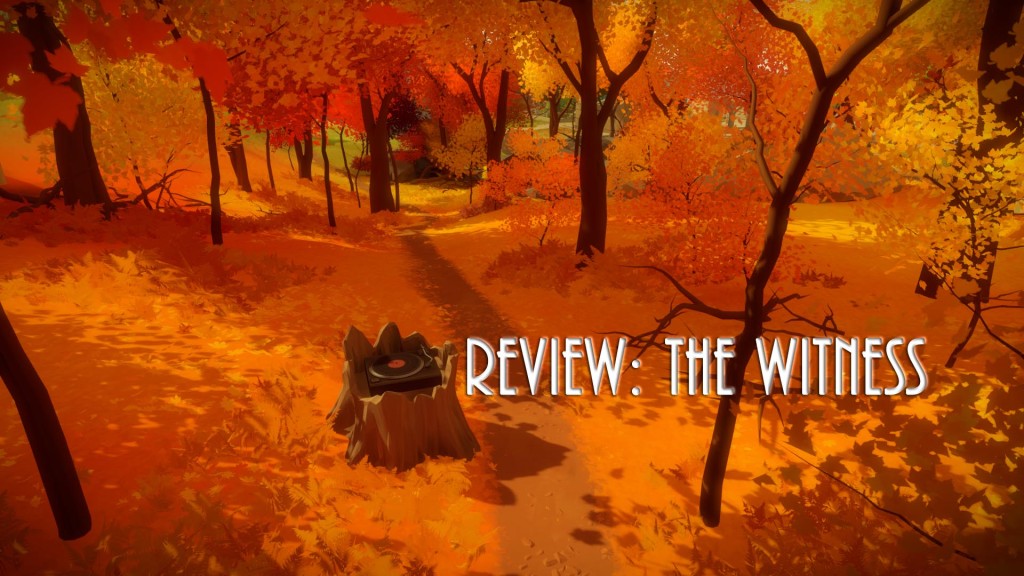
I have nothing more to add.

Way back when - back when PC's were still young-ish and AAA-gaming was a little like indie gaming is today, there was a guy named Jordan Mechner. He wanted to make very visual, story-intense games. But the thing is, the hardware wasn't quite at the point where he could do what he wanted. So, instead of making photo-realistic, beautifully rendered games - because he couldn't - he made stunningly realized pixel-based games that had the most fluid movement you could possibly imagine.
His first design was the masterfully simple Karateka. Always go right. Flip between fight stance and run stance. Kill the bad guys. Watch the story unfold. As simple as Karateka was, it summed up Mechner's way of creating games.
Between Karateka and Prince of Persia, five years would pass - and while the graphics got better, they were still not realistic. Which was fine. Prince of Persia was moody and simple - the motion of the prince was what was important. And boy was he fluid.
This doesn't quite bring me to Sands of Time, but it does illustrate the main point I'm trying to make - a lot of Jordan Mechner's games are about the fluidity of the body - and how beautiful it can seem when running or jumping or engaged in combat.
And that, in a nutshell, is where Sands of Time absolutely delivers. Read more

Well as with everything fun and exciting, there must be an end. Just Cause 3 has been recently finished and it held its share of surprises. This was a fun one guys, read on for my thoughts on this crazy destruction sandbox game.
A quick run down for those who don't already know: Just Cause 3, is an open world action adventure game where you play as Dictator Removal Specialist, Rico Rodriguez. Your goal? To liberate the island Nation of Medici from an oppressive ruler by destroying all the government infrastructure you can see by any means you have at your disposal. So that's the plot in a nutshell. Though even with the very close similarities between all the games in this series, Just Cause 3 actually has a little deeper story. You'll just have to work a bit to see it told, as the games story missions only cover the necessary elements to get you through to the end. The rest of the finer details are found through collecting scraps of an audio diary told from the perspective of the dictator himself, Sebastiano Di Ravello. We even get to learn some of Rico's own history in this game. Now, this is certainly not story telling on the level of let's say The Witcher series, but for an action arcade, "being a badass" game Just Cause 3 is actually pretty interesting.
So that's the plot in a nutshell. Though even with the very close similarities between all the games in this series, Just Cause 3 actually has a little deeper story. You'll just have to work a bit to see it told, as the games story missions only cover the necessary elements to get you through to the end. The rest of the finer details are found through collecting scraps of an audio diary told from the perspective of the dictator himself, Sebastiano Di Ravello. We even get to learn some of Rico's own history in this game. Now, this is certainly not story telling on the level of let's say The Witcher series, but for an action arcade, "being a badass" game Just Cause 3 is actually pretty interesting.
Even some of the characters in this title are a little more fleshed out and memorable. We meet Rico's childhood friend Mario Frigo, early on and he's a kind of sleezy, weasel of a guy but he's actually pretty likeable as well. He wants to be at the forefront of the action right along with Rico, but he possesses none of the skills so he tends to be the guy Rico looks after more than the guy he fights along side. But even though he's a bit of hindrance, Mario plays a lasting part in the story and is really a true friend to Rico. I don't want to go in too deep so I don't spoil it for anyone who's interested in the game. It's just nice to have relatable characters in a game where causing havoc with no regard to safety is the main goal. By the way the image below is not of Mario, just a couple more interesting folks. So back on day one of the release I mentioned things like long load screens and lots of cut scenes etc. that slow down the games movement and kind of break up the flow. Well, the good thing is that after the initial training and first couple of missions you're free to go about your business however you see fit. This helps to minimise load screens and it's pretty cool to be able to go anywhere at any time and even just skip the story mode if you choose to. There are only a few large military bases that pretty much have to be liberated by playing the story missions. Freedom of exploration has always been a big deal in this series and it's good that Just Cause 3 has kept that going.
So back on day one of the release I mentioned things like long load screens and lots of cut scenes etc. that slow down the games movement and kind of break up the flow. Well, the good thing is that after the initial training and first couple of missions you're free to go about your business however you see fit. This helps to minimise load screens and it's pretty cool to be able to go anywhere at any time and even just skip the story mode if you choose to. There are only a few large military bases that pretty much have to be liberated by playing the story missions. Freedom of exploration has always been a big deal in this series and it's good that Just Cause 3 has kept that going. Something else I mentioned in my first impression that I should revise here is that the main enemy in the game is the Di Ravello Militia. So the game has you literally fighting DRM. But when you start the game up it logs you in to your Square Enix account and makes you take part in leaderboard nonsense and what have you. One could argue as I did that is in fact drm in itself. However even with all the seemingly mandatory login stuff it's not actually mandatory. Here's why. So you start the game, and before you even get menu options, you're logged in. However if your login fails for some reason or you happen to lose your connection in game, it makes no difference. You're not kicked out to the main menu or removed from play, instead you just can't take part in the leaderboards until the connection is reestablished. So yes, drm in the fact that you have no choice in being connected or not, but not drm in the fact that if you do lose a connection you can still play in offline mode. The worst of it is that the game will pause while it tries to reconnect, this only takes a few moments and also only when you open your map which effectively pauses the game anyway so who cares. For PC at least, you'll even be able to go into offline mode through Steam and still play with the same results, just no leaderboards. So in my opinion this is in fact pretty well handled drm-ish material and has little to no effect on game play.
Something else I mentioned in my first impression that I should revise here is that the main enemy in the game is the Di Ravello Militia. So the game has you literally fighting DRM. But when you start the game up it logs you in to your Square Enix account and makes you take part in leaderboard nonsense and what have you. One could argue as I did that is in fact drm in itself. However even with all the seemingly mandatory login stuff it's not actually mandatory. Here's why. So you start the game, and before you even get menu options, you're logged in. However if your login fails for some reason or you happen to lose your connection in game, it makes no difference. You're not kicked out to the main menu or removed from play, instead you just can't take part in the leaderboards until the connection is reestablished. So yes, drm in the fact that you have no choice in being connected or not, but not drm in the fact that if you do lose a connection you can still play in offline mode. The worst of it is that the game will pause while it tries to reconnect, this only takes a few moments and also only when you open your map which effectively pauses the game anyway so who cares. For PC at least, you'll even be able to go into offline mode through Steam and still play with the same results, just no leaderboards. So in my opinion this is in fact pretty well handled drm-ish material and has little to no effect on game play.
So, on to the fictional Island of Medici. This is a really pretty place guys. The landscape is beautiful and feels very natural. You'll see these really lovely cliffs and hills, fields dotted with ancient ruins and small charming Mediterranean coastal villages filled with people going about their every day lives. You'll see folks driving on the roads, working fields on tractors, tourists taking selfies and talking on cell phones it all feels very normal and work-a-day until you hear the propaganda being spouted by speakers mounted near buildings and on vans driving around town. You'll see billboards and statues dedicated to the vanity of Di Ravello. Militia will always be near by, armed and ready to strong arm anyone who steps out of line. This is a beautiful place idyllic in it's very nature, but everywhere you look there is a military presence. It really sets the mood, and puts you in the shoes of a guy who can make a difference.
 Graphically, this is a wonder. Just Cause 3 has a 400 square mile, seamless map. View distances are great, you can literally see for miles. The ocean surrounding Medici is one of the best and most real feeling I've seen in a game. You'll be able to see deep in to the water and watch the waves roll in. The further out you look you'll see white caps and larger swells. The lighting is wonderful and volumetric. Clouds and trees cast rays when the sun is behind them. When it rains everything gets wet and after the storm has passed you're left with puddles in the roads that dry slowly over time. Get in a helicopter and hover it close to the ground and you'll see dust fly and vegitation fluttering under the heavy wind it causes. Likewise with water. The UI is a little noisy, it makes sure to put everything right in your face so you can see it, but it's not too tough to tune out once you get used to it. Particle effects are of course amazing, because you can't give players the option to blow up everything from gas cans to fuel storage tanks to mega sized bucket wheel excavators without having excellent particle effects. The game runs great as well, very optimised. I experienced very few frame drops overall, which is saying a lot for a game with a map this big running at max settings.
Graphically, this is a wonder. Just Cause 3 has a 400 square mile, seamless map. View distances are great, you can literally see for miles. The ocean surrounding Medici is one of the best and most real feeling I've seen in a game. You'll be able to see deep in to the water and watch the waves roll in. The further out you look you'll see white caps and larger swells. The lighting is wonderful and volumetric. Clouds and trees cast rays when the sun is behind them. When it rains everything gets wet and after the storm has passed you're left with puddles in the roads that dry slowly over time. Get in a helicopter and hover it close to the ground and you'll see dust fly and vegitation fluttering under the heavy wind it causes. Likewise with water. The UI is a little noisy, it makes sure to put everything right in your face so you can see it, but it's not too tough to tune out once you get used to it. Particle effects are of course amazing, because you can't give players the option to blow up everything from gas cans to fuel storage tanks to mega sized bucket wheel excavators without having excellent particle effects. The game runs great as well, very optimised. I experienced very few frame drops overall, which is saying a lot for a game with a map this big running at max settings.
My system is a few years old now with a couple of more modern upgrades but I'm running an AMD Phenom 2, 3.3gz 6 core 1100T processor coupled with an AMD XFX R9 280x GPU with 3 gigs on board video ram and 16gigs of 1600 mhz system ram. Also my games drive is a standard 7200 rpm, 2 terabyte HDD, so I don't even have the added access speed from an SSD. For those who can utilize it, this game also supports 4k resolution.
 A side note here, the devs put in these cool tributes to loved ones. I just feel this is worth mentioning.
A side note here, the devs put in these cool tributes to loved ones. I just feel this is worth mentioning. There were some initial issues for us AMD users who had these crazy tears in the world due to some updates that came from the new Crimson graphics drivers themselves. I showed a screenshot of that back here. This wasn't Avalanche's fault everyone, leave them alone in that matter and keep in mind that a fix is in the works. For me and many others the latest beta driver updates from AMD fixed the issue. This wasn't case for everyone, but reverting to older drivers should fix that problem as well.
There were some initial issues for us AMD users who had these crazy tears in the world due to some updates that came from the new Crimson graphics drivers themselves. I showed a screenshot of that back here. This wasn't Avalanche's fault everyone, leave them alone in that matter and keep in mind that a fix is in the works. For me and many others the latest beta driver updates from AMD fixed the issue. This wasn't case for everyone, but reverting to older drivers should fix that problem as well.
Sounds are also super good. Wind whips through your ears while you're parachuting or wingsuiting. Cars and boats have great engine noises, aircraft are loud and very realistic. You'll have the chance on many occasions to just stand there and listen to jet take off from a runway and I suggest doing it. Weapon noises and explosions sound pretty convincing as well. Overall there's a very visceral feeling to it all.
Gameplay itself is fun, even though there are really only a few things to do to progress in the game. It's a matter of how you go about doing those things that gives Just Cause 3 it's variety. You can choose to assault a base on foot with the good old run and gun up close and personal attitude, which works just fine and is a lot of fun. You can also assault that same base by jumping in a stolen military tank and firing cannon rounds at everything, also very satisfying. You can fly in with a helicopter and fire rockets or missiles, or swoop in on a bomber and crater the place. You can skydive from a cliff overlooking it all and just parachute in guns blazing, throwing grenades and liberate the whole place without ever touching the ground. These and many other ways to accomplish your goals will help remove some of the repetitiveness that can take place when the excitement of having an infinite parachute, a retractable grappling hook and access to pretty much any weapon and vehicle you want wears off. I mean, honestly would you just walk up to an enemy and shoot them with your pistol to get the job done? Or would you instead take a liking to spearing them with a grappling hook then attaching the other end to a near by gas bottle so you can shoot that then sit back and watch the guy rocket hundreds of feet in the air ending in an explosion that happens to bring down an enemy helicopter that was flying too close? If you chose the first option then you're better off going back to Halo or something.
I never noticed the game to be particularly difficult. Most enemies aren't very tough, and Rico can take a lot of punishment. Even if you are defeated, your progress up to that point is saved so it means very little. I guess I'm saying if you're looking for a challenge, this isn't really going to scratch that itch. But if you want to have fun in a great and many times even humorous setting, this is your jam. 
 Just Cause 3 gives players a few more options than just liberating bases and towns. You'll unlock challenges that earn you points toward improving the effectiveness of your gear. There are daredevil jumps when the goal is to grab a car or motorcycle and drive super fast off a big ramp over a thousand foot drop and score points based on how cool you did it. There's also a bomb blast mode where you'll be given a vehicle with a big bomb that will explode if you drive to slow, but if you make it to your goal and bail out before it explodes it will just blow the absolute crap out of the enemy you're targeting. And... you can choose to drive that vehicle in to a military base if you wish and blow that up instead. There are wing suit courses, plane and helicopter courses and boat races. There's this really cool grappling hook trial where you're given a vehicle and what equates to a magnet. You attach the magnet to the vehicle and drive around collecting a mineral to drop in a pit while the military is trying to blast you away. The goal of all these challenges is to unlock things for your gear, I.E. stronger cables for your grappling hook, and different modes for your planted explosives etc. After you beat the game you can even revert towns and bases to their oppressed state so you can liberate them again. Awesome replay-ability.
Just Cause 3 gives players a few more options than just liberating bases and towns. You'll unlock challenges that earn you points toward improving the effectiveness of your gear. There are daredevil jumps when the goal is to grab a car or motorcycle and drive super fast off a big ramp over a thousand foot drop and score points based on how cool you did it. There's also a bomb blast mode where you'll be given a vehicle with a big bomb that will explode if you drive to slow, but if you make it to your goal and bail out before it explodes it will just blow the absolute crap out of the enemy you're targeting. And... you can choose to drive that vehicle in to a military base if you wish and blow that up instead. There are wing suit courses, plane and helicopter courses and boat races. There's this really cool grappling hook trial where you're given a vehicle and what equates to a magnet. You attach the magnet to the vehicle and drive around collecting a mineral to drop in a pit while the military is trying to blast you away. The goal of all these challenges is to unlock things for your gear, I.E. stronger cables for your grappling hook, and different modes for your planted explosives etc. After you beat the game you can even revert towns and bases to their oppressed state so you can liberate them again. Awesome replay-ability.
I'd also Like to give props to the design teams. They actually made some original and really cool vehicles for this game. Plus if you can see it, you can drive it. Just bring it to a garage and Mario will chop it for you allowing the rebels to drop it wherever you may need it. This includes all vehicles: cars, motorcycles, boats, tanks, planes and helicopters. A rebel drop will also give you weapons and ammo if you so choose. To get a rebel drop you'll need to use a beacon that Rico throws on the ground. These beacons are refillable at various places throughout Medici.

 Something I just can't stand about the game though is a thing like, $25 dlc on day one of release. This of course spans more than just the Just Cause 3 game, it's a widespread problem. Xcom 2 will also have day one dlc, in fact it's on sale already and the game's now due out until February. This is just in general a bad way to release games. There's no reason why these skins and color changes shouldn't be unlocked through playing a game we've already purchased. Especially because if developers have the time to create dlc that goes on sale immediately, then they should be able to release a bug-free product (ahem, Bethesda). And what's with the prices guys? At least make the incentive to buy worth it.
Something I just can't stand about the game though is a thing like, $25 dlc on day one of release. This of course spans more than just the Just Cause 3 game, it's a widespread problem. Xcom 2 will also have day one dlc, in fact it's on sale already and the game's now due out until February. This is just in general a bad way to release games. There's no reason why these skins and color changes shouldn't be unlocked through playing a game we've already purchased. Especially because if developers have the time to create dlc that goes on sale immediately, then they should be able to release a bug-free product (ahem, Bethesda). And what's with the prices guys? At least make the incentive to buy worth it.
Anyway, my play through took me around 60 hours. This is a pretty good play value in my opinion. The story itself is probably only worth about 12 to 15 hours of play time if you just skip the liberations and blow through story mode only. However this is a game about being awesome. Think of Rico as a character from the Expendables movies. Of course you're gonna blow shit up! This is rediculous fun that had me actually laughing and wide eyed through most of it.
Would I recommend Just Cause 3? Yes, I would certainly recommend it. If you're looking for mindless fun or a playable action movie this is your game. As well as the other Just Cause titles. I might suggest waiting for a sale only because if you've played the other games in the series then you've played this one as well. But I definitely liked Just Cause 3 and I'm sure you guys will too.
System requirements for Just Cause 3 are as follows.
MINIMUM:
OS: Vista SP2 / Windows 7.1 SP1 / Windows 8.1 (64-bit Operating System Required)
Processor: Intel Core i5-2500k, 3.3GHz / AMD Phenom II X6 1075T 3GHz
Memory: 6 GB RAM
Graphics: NVIDIA GeForce GTX 670 (2GB) / AMD Radeon HD 7870 (2GB)
Storage: 54 GB available space
RECOMMENDED:
OS: Vista SP2 / Windows 7.1 SP1 / Windows 8.1 (64-bit Operating System Required)
Processor: Intel Core i7-3770, 3.4 GHz / AMD FX-8350, 4.0 GHz
Memory: 8 GB RAM
Graphics: NVIDIA GeForce GTX 780 (3GB) / AMD R9 290 (4GB)
Storage: 54 GB available space
Here are some more screens from Medici. Just stuff too cool not to share.
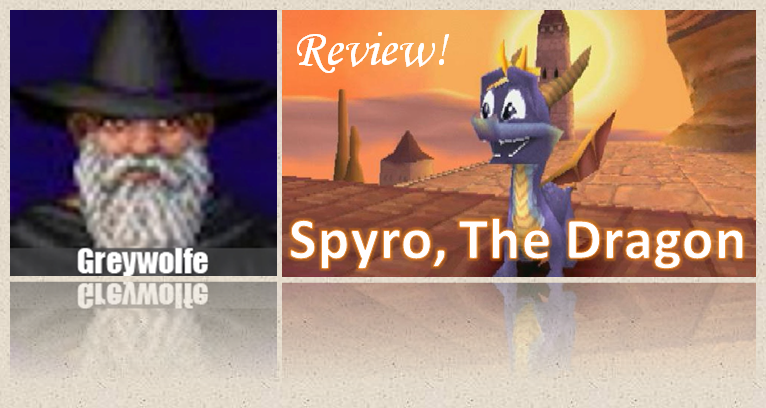
As a warning: if you love the original Spyro, The Dragon for Playstation, you may want to steer clear of this review. I wasn't a huge fan and you're probably just going to take umbrage. Now, on with the show. Read more